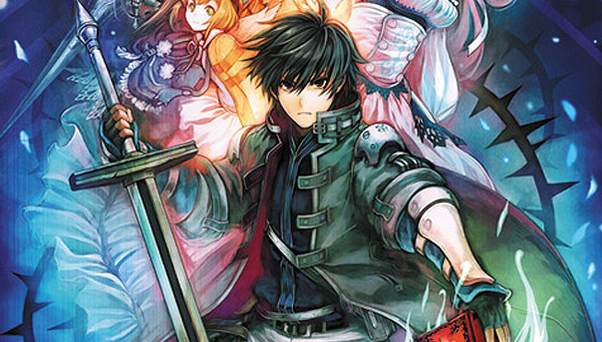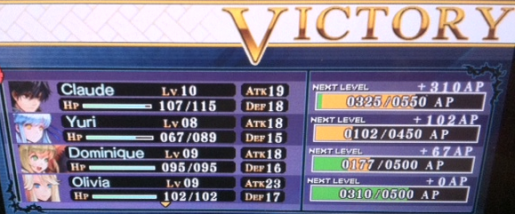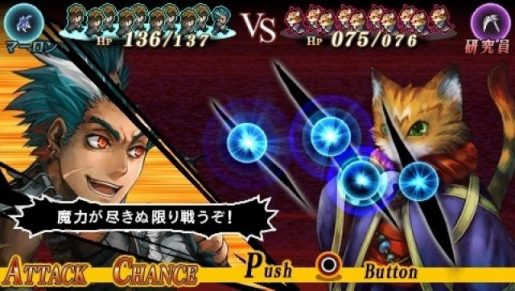Generation of Chaos: Pandora’s Reflection is the sixth entry in a long running RPG series from Idea Factory (and only the third to make its way across the ocean to USA). This latest role-playing game comes by way of a collaboration with STiNG, of Knights in the Nightmare and Gungnir fame. With the gameplay shift from grand strategy battles to smaller skirmishes, can Pandora’s Reflection truly shine on its own?
Let’s check out what’s HOT and what’s NOT in our review of Generation of Chaos: Pandora’s Reflection.
HOT
Simplified Gameplay
Gone from Pandora’s Reflection are the large scale skirmishes from games past. Instead, the STiNG collaboration focuses upon much smaller battles numbering no more than a dozen units onscreen at a time. Each unit themselves is based upon a leader represented upon the map and a number of nameless mercs that make up their health bar. The higher the percentage of remaining health on a leader, the more units they have on the field. This comes in handy when trying to overtake or destroy strategic points on the map, as the more units on a given point the faster it is overtaken.
Every map has its own unique terrain types and dangers to worry about. Some may feature lush forests, others may be filled with waterways and bridges. Each unit in the game behaves a little differently when it comes to these terrains, as some may be better suited than others. The main hero of Pandora’s Reflection, Claude the alchemist, has a unique ability where any terrain he travels through with a negative penalty is temporarily replaced with a sort of crystal bridge that any unit can quickly cross over. This helps greatly for setting up paths and you may have to hastily retreat back to defend your main base during an enemy advance. Other units have their own strengths and weaknesses when it comes to traveling through different terrains, so it’s good to experiment and play to each hero’s strengths.
Combat in Generation of Chaos: Pandora’s Reflection is initiated by simply bumping two units together during the real-time strategy sections. From there, the focus quickly shifts to a rock paper scissors-esque combat system. Each unit can carry two weapons at a time and these weapons overlap one another in advantages. Swords beat guns, guns beat spears, spears beat swords. There are also two wild card weapons types to utilize as well. Sickles are beaten by these three weapon types but are strong versus wands and books; on the other hand, wands and books beat any other weapon type except for sickles; so it is incredibly important to have a diverse selection of weapons on the battlefield.
New mechanics
Generations of Chaos: Pandora’s Reflection features a combat mechanic that’s rarely seen in other strategy games: rhythm. In each attack, there’s a weapon sigil on screen depending upon what weapon is being used to attack. As this sigil is filled in, a number of tiny circles, or beats, appear on screen. Time your button presses along to these beats to increase damage as well as the distance you knockback the enemy after combat.
Another important reason to vary your weapon types is because of a system called ‘Impact Circle’. These circles show up after a successful attack and vary in size depending upon the weapon used. Each weapon has a rating that affects the size of the circle, from XS (Extra Small) such as a book all the way up to XL (Extra Large) for sickles/scythes. If an allied unit is in the impact circle, you can chain together a second attack without worrying about an enemy counter-attack. Do this five times in a row for every unit on the field and you’ll be rewarded with a Chaos Special Attack and a huge damage boost against that enemy unit.




John
February 15, 2013 at 11:49 PMHi,
Does this game have much in the way of story/plot? Or interesting characters?
Kai Powell
February 16, 2013 at 2:46 AMThe story is in the same vein as most other jrpg fare, so there isn’t really much of anything unique there. It’s a little bit darker than most other stories and one of the big themes is the main character is trying to do what he thinks is right. There’s a scenario where he thinks he’s working for the greater good but it only ends up benefiting a party that ends up being the group he’s been up against all along.
As far as the characters, there really isn’t anything too unique for their personalities. You’ll find a number of different species making their way into your party, including angels, homunculi, and mermaids.